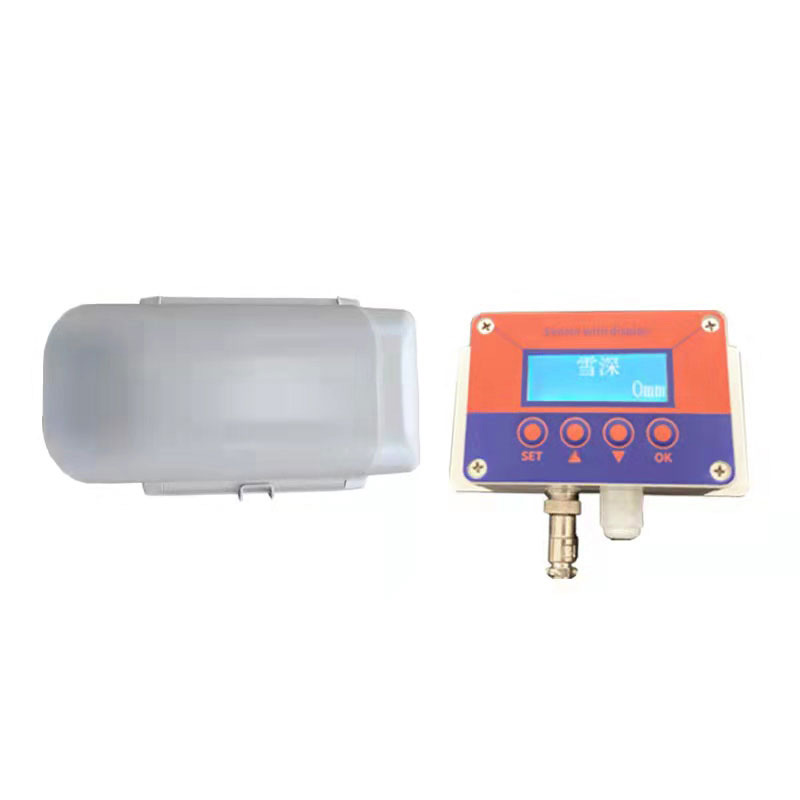Meteorological environment monitoring equipment supplier
Insist on doing high-precision customer favorite technology products

1. Overview of Laser based Snow Depth Sensor
Laser based Snow Depth Sensor adopts laser based snow recognition and measurement technology to overcome the shortcomings of other sensors that can not recognize snow.Water is the foundation for the existence of all living things on the earth. The changes and movements of water have created our world today. Snowfall is an important part of the water cycle. Snowfall has a certain impact on the balanced development of the ecological environment and people's life and production.
The automatic snow depth monitoring station is a set of professional equipment launched by our company based on many years of experience in manufacturing meteorological environment instruments for real-time monitoring of snowfall information. The equipment uses laser snow recognition and measurement technology to overcome ultrasonic, electromagnetic waves, weight and other types of snow. The sensor cannot detect snow, thereby achieving extremely high detection accuracy. By monitoring the distance to the location, the thickness of the snow is obtained and the snowfall per unit time is analyzed. This equipment can be used as an independent automatic snow depth monitoring and alarm system, or it can be networked to form a diversified network monitoring.
Scope of application: Widely used in weather stations, port and terminal safety monitoring, road traffic safety monitoring, aviation monitoring, building safety monitoring, agricultural production monitoring, hydrology and water conservancy and many other fields.
2. Laser based Snow Depth Sensor laser ranging principle
The snow depth sensor uses the principle of a phase laser rangefinder to measure the snow depth. The phase laser rangefinder uses the frequency of the radio band to modulate the amplitude of the laser beam and measure the phase delay caused by the modulated light traveling back and forth to the measuring line once, and then based on The wavelength of the modulated light is converted into the distance represented by this phase delay. That is, the indirect method is used to measure the time required for light to travel back and forth from the survey line, thereby solving the snow depth.
3. Laser based Snow Depth Sensor technical parameters
| powered by | DC12-15V | |
| Measuring range | 0.05~3m | |
| Measurement accuracy (standard deviation) | ±1.0mm | |
| Signal output | RS485 | |
| distance unit | m | |
| Laser type | 620~690nm | |
| Laser level | Level II, <1mW | |
| Spot diameter at distance m | 6mm@10m, 30mm@50m | |
| Single measurement time | 0.05~1s | |
| Protection level | IP65 | |
| working temperature | -40~+50℃ | |
| storage temperature | -20~+80℃ | |
| weight | ||
| Dimensions (length × width × height) | ||
| Implementation standards | GB/T 14267-2009 | |
| Power consumption | standard | 0.9W |
| heating | 14W | |
| Heating method | Automatic temperature control | |
Remark:
For different measurement targets and measurement environments, due to excessive ambient light intensity, too high or too low ambient temperature, too weak or too strong target reflection, or rough and uneven target surface, the measurement range may be shortened or the measurement results may be adversely affected. Big error.
How it works:
Measurement method:
Zero adjustment is required after initial installation and use or after moving the installation location. Press and hold "SET" for 5 seconds to complete the zero adjustment.
The working principle of the sensor: when there is snow (snow depth is greater than 10mm), data is collected once every 10 minutes; when there is no snow, data is collected once every 30 minutes.
Heating time in the cavity: When the temperature in the cavity is lower than 0 degrees, the heating mode is turned on and the heating time is 5 minutes each time.